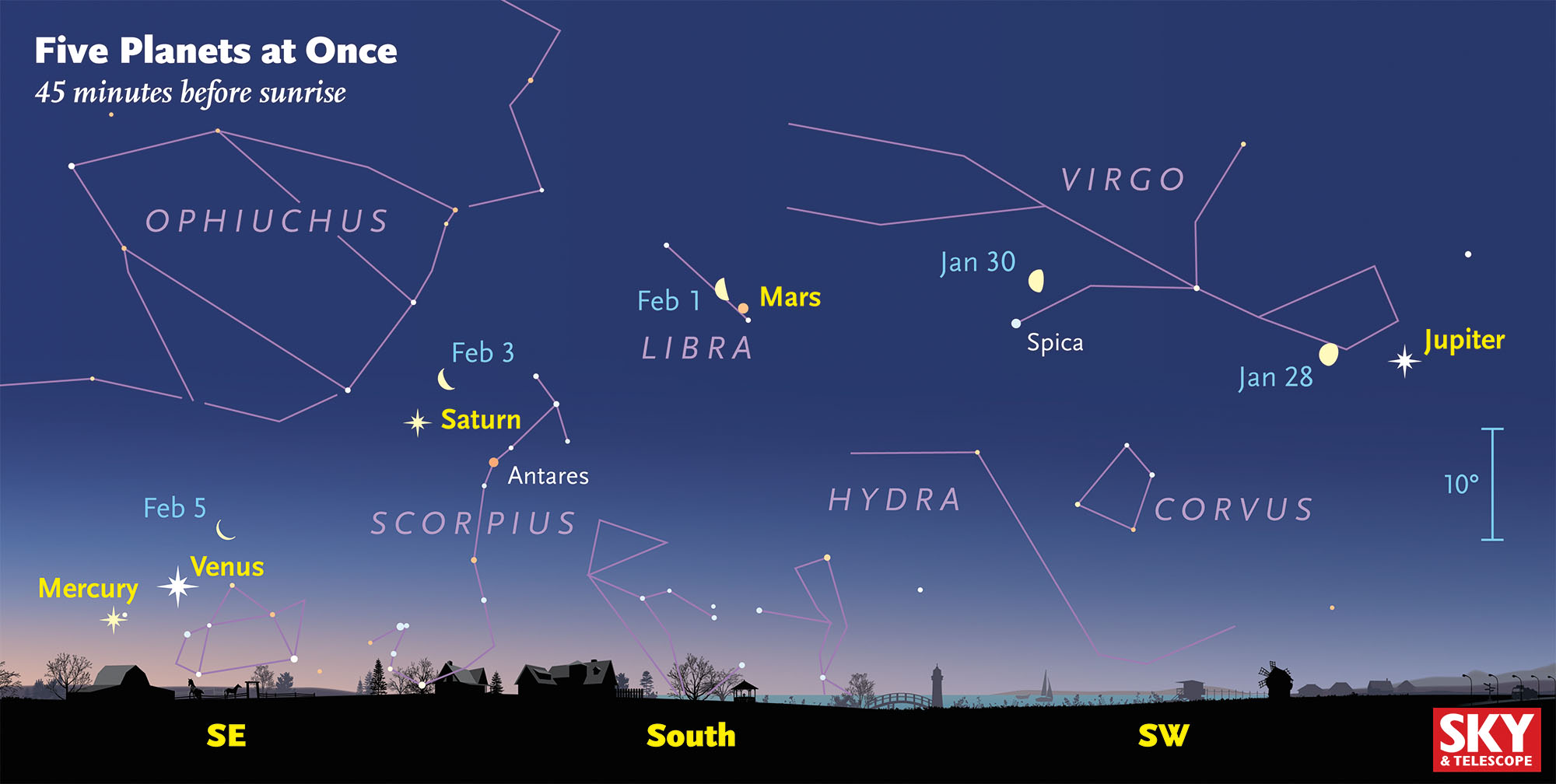You Can See 5 Bright Planets in the Night Sky: Here's How

Skywatchers, get set. All five naked-eye planets — Mercury, Venus, Mars, Saturn and Jupiter — are appearing together in the pre-dawn sky for the first time in a decade. You need only clear skies and your bare eyes to see them; no binoculars or telescopes are required.
The most challenging of this group to see is Mercury, which is at its best in the next two weeks. If you are an experienced planet hunter, however, you may still be able to see the five planets together as late as Feb. 20.
The planets are not actually aligning in any special way in space. They all travel along a path in Earth's sky called the ecliptic, which mirrors the plane of the solar system. A couple of times a decade, the planets all appear in Earth's sky at the same time. [Skywatching 2016: The Year's Must-See Events (Infographic)]
The best time to look is about 45 minutes before sunrise, Sky & Telescope editors said in a statement. Pick an observing spot that has an unobstructed view of the southeast, near where the sun will rise. You will then see the very bright planet Venus, which is brighter than any other planet or star and impossible to miss.

Mercury will be just to the lower left of Venus, at a distance of about the width of your clenched fist at arm's length. Later in January, Mercury will get even closer to Venus. The other three planets are visible in an arc to the right of Venus. There's Saturn, which is just above the orangey star Arcturus. Next in the arc, you will see Mars, which is to the south and appears red. When you turn to the southwest, far past the bright star Spica, Jupiter will appear high in the sky.
Bear in mind, you will need to observe much of the sky to see all five planets. Their arc spans more than half the sky, or 110 degrees. Note: Your closed fist held out at arm's length covers about 10 degrees of the night sky.

The moon can help you as a celestial guide later in the month, when it begins to appear among the planets. It will be near Jupiter on Jan. 27 and 28, Mars on Feb. 1, Saturn on Feb. 3, Venus on Feb. 5, and Mercury on Feb. 6.
Get the Space.com Newsletter
Breaking space news, the latest updates on rocket launches, skywatching events and more!
The last time the planets were visible like this was between late December 2004 and early January 2005. When this event next happens, in mid-August 2016 and mid-July 2020, it will be tough to spot Mercury, because it will be very close to the horizon.
Editor's note: If you capture an amazing photo of the five planets in the night sky and you'd like to share with us and our partners for a story or image gallery, send images and comments in to managing editor Tariq Malik at spacephotos@space.com.
Follow Elizabeth Howell @howellspace, or Space.com @Spacedotcom. We're also on Facebook and Google+. Original article on Space.com.
Join our Space Forums to keep talking space on the latest missions, night sky and more! And if you have a news tip, correction or comment, let us know at: community@space.com.

Elizabeth Howell (she/her), Ph.D., was a staff writer in the spaceflight channel between 2022 and 2024 specializing in Canadian space news. She was contributing writer for Space.com for 10 years from 2012 to 2024. Elizabeth's reporting includes multiple exclusives with the White House, leading world coverage about a lost-and-found space tomato on the International Space Station, witnessing five human spaceflight launches on two continents, flying parabolic, working inside a spacesuit, and participating in a simulated Mars mission. Her latest book, "Why Am I Taller?" (ECW Press, 2022) is co-written with astronaut Dave Williams.









